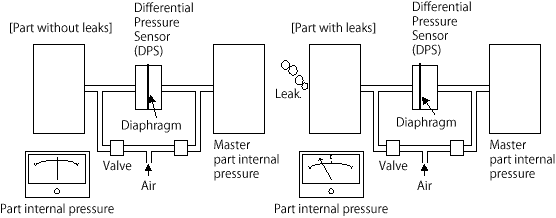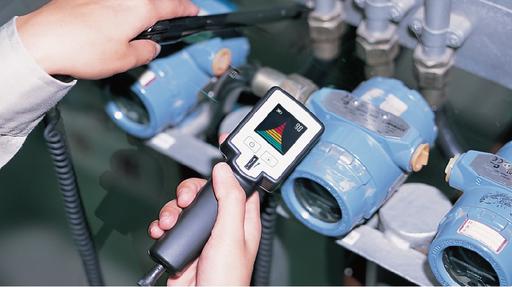Air leak detection methods include ultrasonic leak detectors and soap bubble solutions. These are commonly used to locate and identify leaks in compressed air systems.
Detecting air leaks is crucial for maintaining energy efficiency and reducing operational costs in industrial facilities. By promptly identifying and addressing leaks, companies can improve the overall efficiency of their compressed air systems, leading to significant energy savings and reduced environmental impact.
We will explore the different methods used to detect air leaks, their benefits, and how companies can implement proactive leak detection strategies to optimize their operations. Understanding the importance of these methods can help businesses prioritize air leak detection as part of their overall maintenance and energy management practices.
Types Of Air Leak Detection Methods
Air leak detection methods are crucial for maintaining the efficiency of industrial equipment. Ultrasonic leak detection relies on sound waves to identify air leaks. Smoke testing involves releasing smoke near suspected leaks to visually detect airflow. Pressure decay testing measures pressure changes to identify leaks accurately.
Factors To Consider
When considering air leak detection methods, two factors to take into account are cost-effectiveness and sensitivity of the method.
Cost-effectiveness is an important consideration as it determines the investment required for a particular method. Some methods, such as visual inspection, may be low-cost but are not always accurate or efficient. On the other hand, technology-driven methods like ultrasonic leak detection can be more expensive but offer a higher level of accuracy and efficiency. It’s crucial to balance the cost with the benefits and long-term savings the method can provide.
The sensitivity of the method is equally important as it determines how well it can detect and locate the leaks. Methods like smoke tests or thermal imaging may have limited sensitivity, and they may not be able to identify smaller or hidden leaks. On the contrary, methods like tracer gas detection or pressure decay testing offer high sensitivity, enabling the detection of even minute leaks.
Considering both the cost-effectiveness and sensitivity of the method is crucial to ensure efficient and accurate air leak detection.
Common Applications
Common Applications:
Automotive Industry: In the automotive industry, air leak detection is crucial for ensuring the integrity of various components such as fuel tanks, brake systems, and engine components. The detection methods used in this industry help maintain high-quality standards and prevent potential safety hazards.
HVAC Systems: Air leak detection plays a vital role in HVAC systems to identify and rectify any leaks in ductwork, valves, and other components. By employing effective detection methods, HVAC systems can operate efficiently, reduce energy consumption, and maintain indoor air quality.

Credit: nexgenairandplumbing.com
Benefits Of Early Detection
Early detection of air leaks in a system can lead to reduced energy costs as the leaks are identified and repaired promptly. By addressing leaks early, it also prevents equipment damage, extending the lifespan of machinery and reducing the need for costly repairs and replacements.
Challenges In Air Leak Detection
Air leak detection plays a crucial role in maintaining the efficiency of various systems. However, identifying hidden leaks can often be a challenge. Such leaks may be concealed or occur in hard-to-reach areas, making them difficult to pinpoint. Using sophisticated detection methods can be time-consuming and expensive, especially for large-scale operations. Interpreting results is another hurdle, as sometimes it’s hard to distinguish between actual leaks and false positives. Moreover, leaks can vary in terms of size and severity, making it even more challenging to prioritize repairs. Despite these obstacles, it’s important to regularly assess and address air leaks to prevent energy waste and reduce carbon emissions. Implementing a comprehensive leak detection program involving regular inspections, advanced technologies, and targeted repairs can help maximize efficiency and minimize environmental impact.

Credit: m.youtube.com
Future Trends
Discover the evolution of air leak detection methods, showcasing modern technologies shaping future trends in efficient leak detection for improved environmental impact and operational sustainability. Stay ahead of the curve with innovative tools revolutionizing the way industry professionals address air leak challenges.
| The future trends in air leak detection methods involve advancements in technology. |
| Integration with IoT has enabled real-time monitoring and alerts for efficient leak detection. |

Credit: www.cosmo-k.co.jp
Frequently Asked Questions On Air Leak Detection Methods
What Are The Most Common Air Leak Detection Methods?
Air leak detection methods include ultrasonic testing, dye penetrant testing, and pressure decay testing. These methods are effective in identifying leaks in various systems or equipment.
How Can Ultrasonic Testing Be Used For Air Leak Detection?
Ultrasonic testing uses high-frequency sound waves to detect leaks by capturing and analyzing the noise produced. It is a non-destructive and efficient method for locating air leaks in industrial and commercial systems.
What Are The Benefits Of Using Pressure Decay Testing For Air Leak Detection?
Pressure decay testing is a reliable method for detecting air leaks in sealed components or systems. It offers quick and accurate results, making it a cost-effective solution for identifying leaks and ensuring the integrity of the equipment.
Conclusion
Air leak detection is a crucial process that helps identify and resolve air leaks in various settings. By using methods such as visual inspection, smoke testing, ultrasonic testing, and thermal imaging, these leaks can be efficiently detected and fixed. Regular air leak detection not only enhances energy efficiency but also improves the overall safety and comfort of a space.
Making air leak detection a priority is a cost-effective and environmentally friendly solution that everyone should consider.
